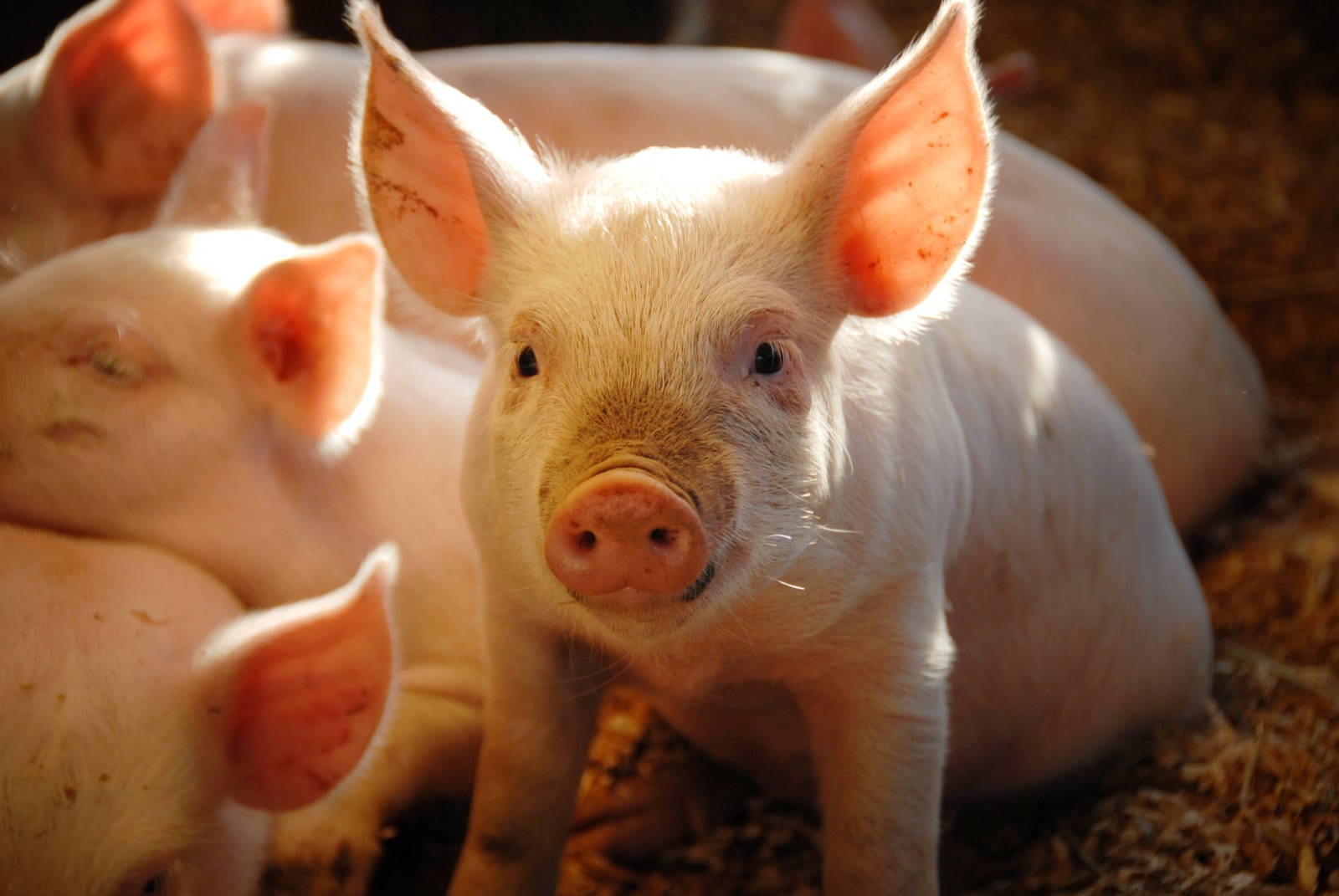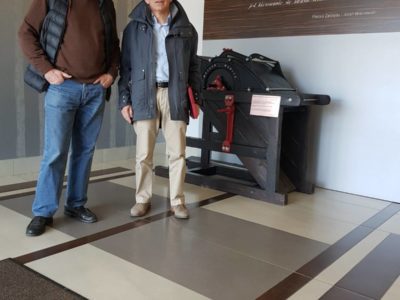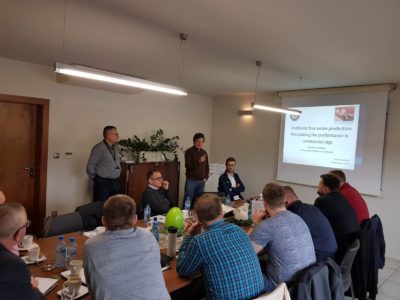
In the Polish market, the U.S. Soybean Export Council (USSEC) focuses on poultry and swine because those sectors consume the majority of the 2.5 million metric tons (MMT) of soybean meal imported to the country annually. In addition to larger educational events such as conferences, seminars, and training courses that USSEC organizes for these industries each year, the organization also offers a series of in-company consultations for select key customers, which serve to discuss the customers’ feeding programs and feed manufacturing procedures as well as livestock health and management issues in their operations.
One such event this spring was a poultry and swine feed meetings, which featured two Spanish subject matter experts, Dr. Gonzalo Mateos, a renowned poultry and swine nutrition specialist, and Dr. Enric Marco, a practicing swine veterinarian with a deep knowledge on digestive pathology, both of whom were already well known to the Polish customers through various professional conventions. This time, Drs. Mateos and Marco toured northeastern and western Poland, visiting soybean-utilizing companies Nutripol and Wipasz and PIAST and Golpasz, respectively.
- At Nutripol, Dr. Marco worked with Dr. Agata Lecewicz on various swine feeding, management and health issues.
- Optimization of turkey diets was the main subject of Dr. Mateos’ work with Judyta Marschall, Nutripol’s poultry nutrition specialist.
- Visitors and staff members were welcomed at Wipasz office building by a historical thresher machine, which caught the attention of the U.S. soy envoys to the Polish company.
- At Wipasz, the USSEC experts worked with two local swine nutritionists, Bartosz Myśliński (second from left) and Sylwester Filipek (third from left), along with Product Manager – Pig Feeds, Ewa Gulbicka-Ilczuk.
- Wipasz’s head office is located at their first feed mill in the city of Olsztyn, which was visited by the USSEC experts. Part of the mill complex is behind.
- The meeting with PIAST’s swine nutrition and service staff began with a couple of presentations that set the stage for further discussion.
- This big crane in one of a hundred medieval grain warehouses in the Old Town of Torun remind contemporary visitors of a long history of grain trade, flour and feed milling, and livestock production in that province of Poland.
- Golpasz, near Torun, was the next stop of the U.S. soy experts. The mill is on the right and AllerPasz fish feed mill is just next to it on the left.
- Professor Mateos enjoyed going into depth about Golpasz’ swine diets with Mr. Bartosz Radoszewski, who formulated most of them.
Antibiotic reduction in animal production was discussed at all companies visited, especially its effects on post-weaning digestive problems. Nutritional solutions based on changes in formulation (lower protein content, higher fiber), quality of protein, feed additives, and other predisposing factors related to animal husbandry were also examined.
The USSEC consultants also spoke about the problems of fast-growing pigs, specifically gastric ulcers and hemorrhagic bowel syndrome. Feed risks in the development of gastric ulcers were detailed, giving special attention to feed particle size, especially when wheat is used in large percentages. Additionally, feed management was reviewed, as one of the main causes for both syndromes is the alteration of feeding pattern.
Poland’s swine health situation, particularly concerning the African Swine Fever virus (ASF), which is especially affecting the northeastern provinces of the country, and its impact on Polish farmers and the pork market was discussed. Dr. Marco emphasized the opportunities of this situation for the more industrialized swine market, which is slowly taking over the traditional segment of this production in Poland.
Professor Mateos explained Spain’s experience with the level of digestible protein fed to DanBred weaners in various phases of their growth, an important topic for Polish growers, the majority of whom finish piglets imported from Denmark. He also spoke about the type of fiber used and its level in feeds in the finishing phase, as well as how Spanish and U.S. growers deal with anaerobes in DanBreds over 70 kilograms. USSEC experts shared information on the use of locally grown legumes – lupins, peas, field beans, and rapeseed – as protein sources in pig nutrition, which allowed them to highlight the benefits of feeding U.S. Hi-Pro to the various age groups of pigs.








